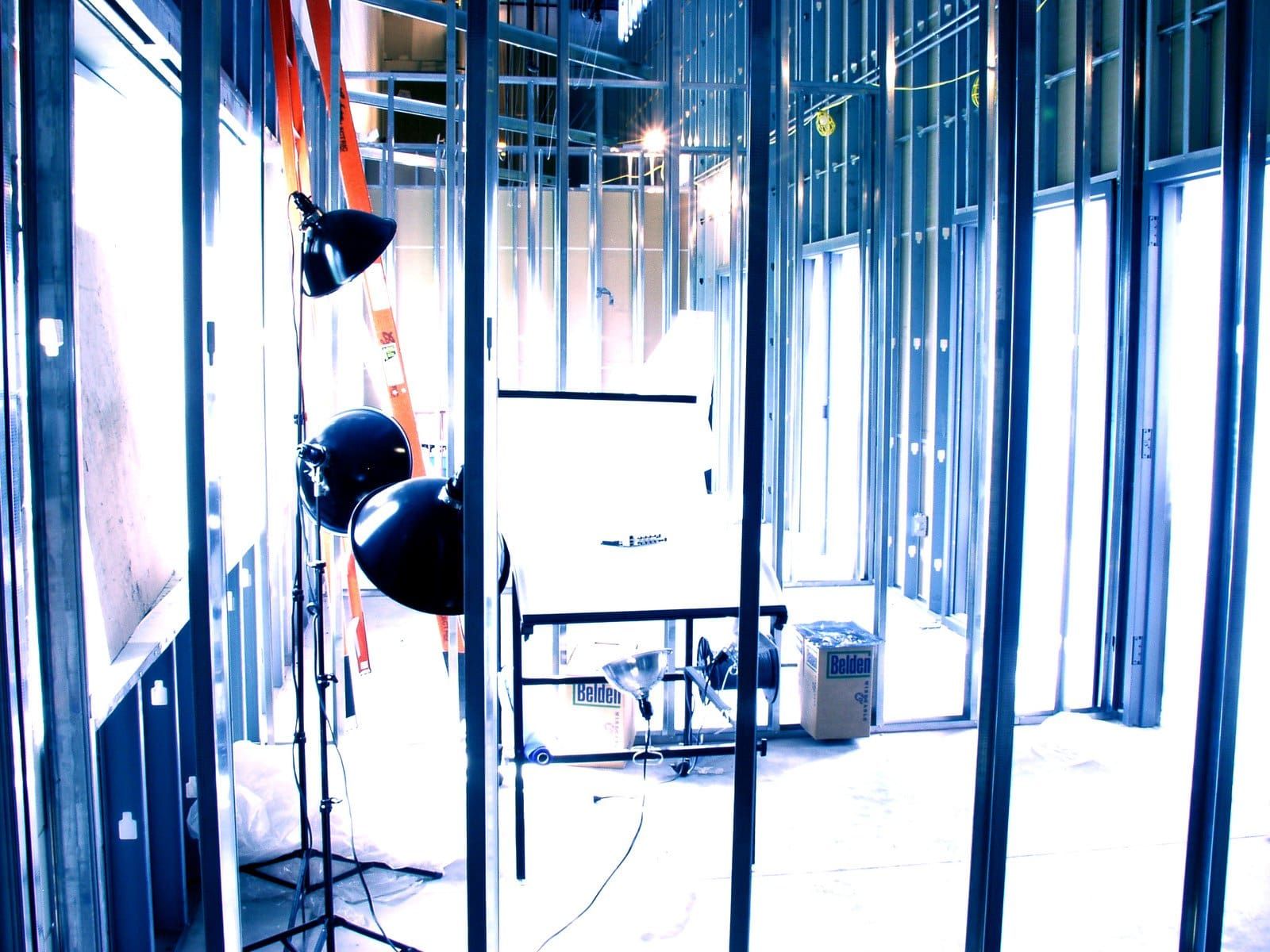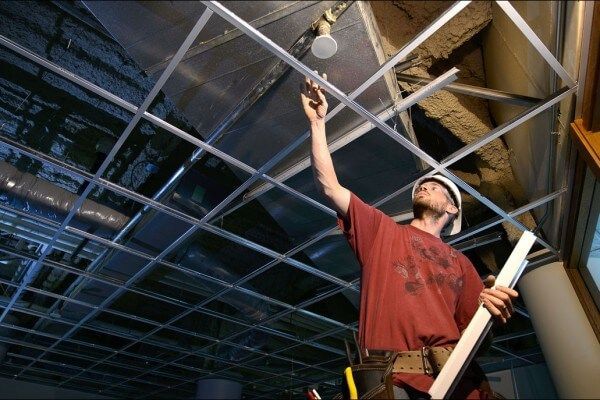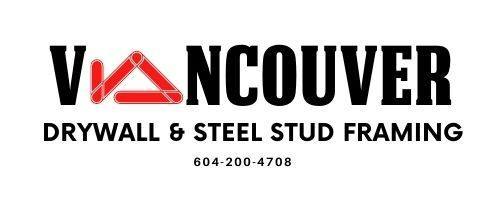Steel Stud Framing Contractors in Vancouver: Transforming Your Property with Strength and Precision
Vancouver Steel Stud Framing Ltd. is the top choice for steel stud framing services in Greater Vancouver and the surrounding areas. We elevate residential and commercial properties with steel's superior strength and precision while in strict accordance with national standards.
Our team of drywall and steel framing experts ensures safer structures that can last for many years, blending durability with architectural beauty for a solid foundation.
Why Choose Steel Stud Framing?
Steel framing is increasingly popular, with over 40% of commercial structures and nearly 500,000 homes built with steel framing in the last decade. In the construction industry, the choice of building material can significantly influence a project's sustainability, cost, and durability.
Steel stud framing offers many benefits over traditional materials like wood studs, aluminum, and concrete blocks. With steel studs, you can expect:
- Unparalleled Strength and Durability: Steel stud framing provides unmatched structural integrity, is non-combustible, and can withstand extreme weather conditions, earthquakes, and fire hazards. Its resilience against warping, shrinking, and splitting ensures a longer lifespan for your property, making it a cost-effective solution in the long run.
- Precision and Flexibility in Design: The precision of steel stud framing allows for greater design flexibility, accommodating complex architectures and designs. This precision ensures tighter tolerances and better overall construction quality, enabling architects and designers to bring their most ambitious visions to life.
- Eco-Friendly and Sustainable: Steel is 100% recyclable, making it one of the most sustainable construction materials available. Choosing steel stud framing reduces the environmental impact of your construction project, supporting a greener future.
- Cost-Effectiveness: While the initial cost may seem higher than wood or aluminum, the long-term maintenance and replacement cost savings make steel stud framing an economically smart choice. Its durability and resistance to damage mean fewer repairs and a longer lifecycle for your building.
Cold-formed Steel Framing?
Cold-formed steel framing shapes sheet steel into various structural profiles, mirroring the dimensions commonly seen in traditional lumber sizes (such as 2x4, 2x6, 2x8, etc.).
This process, known as roll forming, involves running sheet steel through a sequence of rollers that meticulously bend it into the desired forms, including the web, flanges, and lips of studs or C-shapes.
Conducted at room temperature, or "cold forming," this method enhances the strength of the steel framing components beyond that of the original steel sheets.

Comparison with Other Materials
Steel Stud Framing vs. Wood Studs
-
Cost
- Steel is initially less expensive but may require additional insulation due to its high thermal conductivity, which can increase overall costs.
- Wood, while more expensive at the outset, generally does not need extra insulation, potentially lowering total expenses.
-
Durability
- Steel offers resistance to moisture, termites, and fire, maintaining its structural integrity over time. However, it requires specialized tools for cutting and installation.
- Wood can support significant weight, making it suitable for load-bearing walls, but is vulnerable to moisture, rot, and pests.
-
Installation
- The lighter weight of steel makes it easier to transport and store, though it demands specific tools and techniques for installation.
- Wood is simpler to cut and customize on-site using common tools and provides natural insulation qualities that ease the installation process.
-
Energy Efficiency
- Steel studs are poor insulators on their own and necessitate additional insulation for energy efficiency.
- Wood studs exhibit better thermal performance, reducing the need for supplementary insulation and thereby decreasing energy costs over time.
Steel Stud Framing vs. Aluminum Framing
-
Strength and Durability
- Steel framing boasts higher tensile and yield strengths, which are beneficial for high-load applications and in environments with persistent vibrations.
- Although aluminum framing has lower strength overall compared to steel, it offers impressive corrosion resistance and is more than twice as strong pound-for-pound when properly designed, making it effective for specialized structural needs.
-
Weight
- Steel is approximately three times heavier than aluminum, an advantage in scenarios where durability and structural integrity are more important than weight.
- Aluminum's lighter weight makes it ideal for applications demanding a lightweight design, requiring fewer structural supports due to its excellent strength-to-weight ratio.
-
Service Life
- The service life of steel is extended due to its higher yield strength but it requires protective coatings or galvanizing in corrosive environments to maintain its integrity.
- Aluminum excels in environments prone to corrosion, such as marine and coastal areas, due to its superior corrosion resistance, significantly enhancing its longevity.
-
Modularity & Assembly
- Steel's modularity is limited; adjustments after assembly can be difficult, which may complicate reconfigurations and modifications.
- Aluminum framing is highly modular, allowing for easier and more flexible modifications and adjustments post-assembly.
-
Manufacturability
- Steel's hardness and brittleness can make it challenging and potentially more costly to work with, impacting manufacturing processes.
- Aluminum is softer and more malleable, enabling the creation of intricate shapes and designs with greater ease, which can reduce costs in complex applications.
-
Cost
- Steel typically offers a more cost-effective solution upfront but may incur additional maintenance and repair costs over its lifecycle.
- Aluminum, while generally more expensive due to the energy-intensive processes required for its extraction and manufacturing, may justify the initial investment through reduced maintenance needs and longevity, especially in corrosive environments.
-
Energy Efficiency
- Steel's higher thermal conductivity demands additional measures such as insulation and thermal breaks to enhance energy efficiency, which can increase construction complexities and costs.
- Aluminum also has high thermal conductivity, which could lead to greater heating and cooling expenses unless design considerations are implemented to mitigate these effects.
Steel Stud Framing vs. Concrete Block Construction
Pros:
-
Steel Stud Framing
- Highly flexible and easy to install, allowing for greater design freedom with adaptable floor plans.
- Offers significant resistance to natural disasters such as earthquakes and hurricanes, coupled with high-temperature resistance up to 910°C.
- Requires minimal maintenance and provides quick and efficient assembly, which can drastically reduce construction times.
-
Concrete Block Construction:
- Exceptionally water resistant, ideal for structures exposed to moisture such as waterfront buildings or dams.
- Provides high strength in compression, making it suitable for load-bearing walls.
- Durability translates into minimal maintenance needs over time.
Cons:
-
Steel Stud Framing
- Necessitates protective coatings to prevent corrosion in humid or marine environments.
- Has low tensile strength, requiring reinforcement with additional materials.
- The production process is energy-intensive, contributing to higher initial environmental impacts.
-
Concrete Block Construction:
- Similar to steel, it has low tensile strength and typically requires reinforcement.
- The production process is not only energy-intensive but also high in cement content, leading to significant CO2 emissions.
- Long curing times can delay construction schedules, potentially impacting project timelines.
Environmental Considerations:
-
Steel Stud Framing
- Highly recyclable, often made from recycled materials, which lessens the environmental footprint.
- Utilizing recycled content helps foster a circular economy, reducing waste and the need for virgin resources.
-
Concrete Block Construction:
- While the raw materials like cement are readily available and inexpensive, their extraction and use are energy and CO2-intensive.
- Vulnerable to supply chain disruptions, particularly following natural disasters, which can complicate resource availability.
Applications:
-
Steel Stud Framing
- Ideal for projects requiring high design flexibility, such as commercial and residential buildings.
- Preferred for areas needing rapid construction and long-term durability.
- Excellently suited for regions prone to natural disasters, thanks to its robustness and resilience.
-
Concrete Block Construction:
- Best used for structures that must withstand water and high temperatures, including dams and buildings in coastal or fire-prone areas.
- Commonly applied in foundations and load-bearing walls where compressive strength is paramount.
Benefits of Steel Framing
- Cost Savings and Efficiency: Steel framing ensures stability, significantly reducing post-construction issues and waste (only 2% scrap vs. wood's 20%), leading to material and waste management savings. Buildings with steel framing may also attract lower insurance rates.
- Lightweight and Easy to Manage: Steel studs are one-third the weight of wood studs and can be spaced further apart, which facilitates faster construction with stronger connections.
- Unmatched Durability: Steel is resistant to rot, mould, pests, and more, ensuring lower maintenance costs over your property's lifespan.
- Health and Sustainability: Steel supports better indoor air quality as it does not emit VOCs. It's environmentally friendly and made from at least 25% recycled material.
- Enhanced Performance and Value: Steel withstands extreme weather and seismic activities, enhancing safety. It is also non-combustible, allowing for denser construction and increased property value and revenue.
What We Can Do For You
As leading steel stud framing contractors in Vancouver, we offer comprehensive steel stud framing services tailored to meet the unique needs of your project. Our expertise includes:
- Custom steel stud framing design and installation
- Precision engineering and detailing
- On-site consultation and project management
- Retrofitting and renovations with steel studs
- Compliance with all local building codes and standards

Strength and Precision: The Cornerstones of Steel Stud Framing
Steel stud framing is the cornerstone of modern construction, embodying unparalleled strength and precision. Here's why we’re the premier choice for steel studs projects:
Contact us Today!
We will get back to you as soon as possible
Please try again later
New Paragraph
Ensure Stronger Connections For Your Property
FAQs
-
What is the installation process for steel stud framing like?
The installation process for steel stud framing is straightforward and efficient. Here are the steps involved:
- Measuring and cutting steel studs to precise specifications.
- Installing the bottom and top track
- Cutting the studs
- Installing the studs
- Installing the drywall
-
Can steel stud framing be customized to fit unique architectural designs?
Steel stud framing offers exceptional flexibility and can be customized to accommodate various architectural designs. Whether you have intricate angles, curves, or unconventional layouts, our team of experts can tailor steel stud framing to meet your specific design requirements.
We work closely with architects and designers to ensure your vision is brought to life with precision and craftsmanship.
-
What maintenance is required for steel stud framing once installed?
Steel stud framing requires minimal maintenance once installed, thanks to its inherent durability and resistance to common issues like moisture, rot, pests, and fire.
Regular inspections to check for any signs of damage or corrosion are recommended, along with occasional cleaning to remove dirt and debris. Steel stud framing offers long-term reliability and peace of mind for property owners.

Address
4214 Miller St. Vancouver, BC, V5N 3Z8 Canada
Phone
604-200-4708
vansteelstuds@gmail.com
CONTACT US TODAY!
Contact Us
We will get back to you as soon as possible
Please try again later
